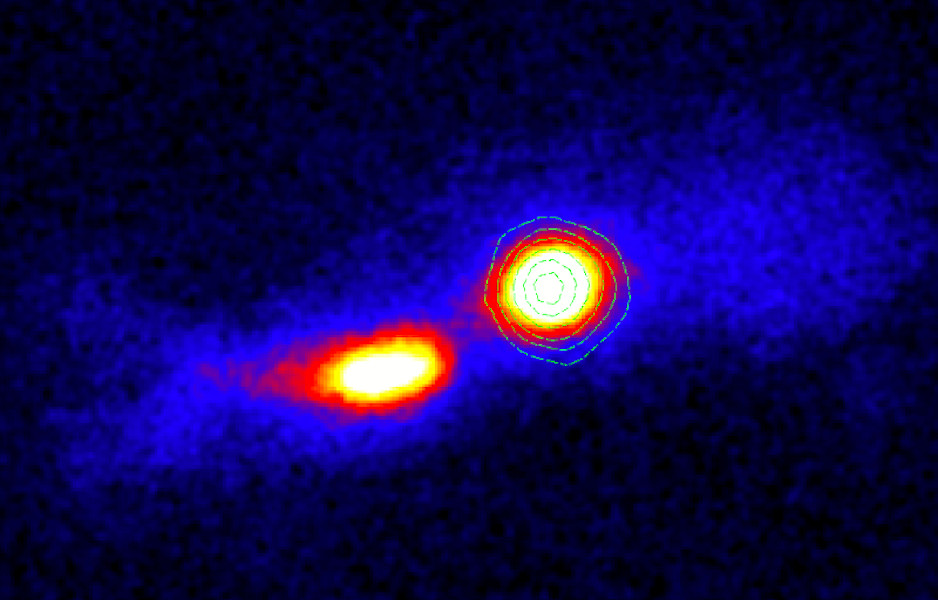
 Credit: V. Paliya et al. (2020, The Astrophysical Journal Vol. 892, pg. 133)
Credit: V. Paliya et al. (2020, The Astrophysical Journal Vol. 892, pg. 133)
Building a New Jet
We've seen many beautiful images of radio jets, narrow bams of high-energy subatomic particles and radiation, stretching for thousands or even millions of light years from their base, a tiny but supermassive black hole at the center of a galaxy. These jets are thought to be produced because the black hole is actively accreting material from a massive disk that surrounds the black hole. But how do these narrow, enormous, enormously powerful, ultra-fast radio jets get started? New observations of an obscure object called TXS 2116-077 provide an important clue. TXS 2116-077 is a spiral galaxy about 4.3 billion lightyears distant that (like most galaxies) hosts a supermassive black hole at its center. It is being rammed by neighboring galaxy, located some 40,000 lightyears away, a collision that is thought to have begun about a billion years ago. Radio, X-ray and gamma-ray observations show that there's a newly-formed radio jet that appears to be only 15,000 years old at the center of TXS 2116-077. Astronomers think that the collision of these two galaxies has directly produced this young jet by driving huge amounts of gas and dust down into the maw of the black hole at the center of TXS 2116-077. The image above is a false-color infrared image obtained with 8.2-meter diameter Subaru Telescope on top of Maunakea in Hawaii of TXS 2116-077 (on the right) and the galaxy colliding with it (on the left). X-ray contours from an observation by the Chandra X-ray Observatory pinpoint the location of the central supermassive black hole in TXS 2116-077, while radio observations from the Jansky Very Large Array show a young, small radio jet arising from this supermassive black hole. This is the first time a merger of two galaxies has been associated with the formation of radio jet. This may imply that almost all radio jets have been the result of mergers between galaxies.
Published: April 13, 2020
<
HEA Dictionary ● Archive
● Search HEAPOW
● Other Languages
● HEAPOW on Facebook
● Download all Images
● Education ● HEAD
>

Each week the HEASARC
brings you new, exciting and beautiful images from X-ray and Gamma ray
astronomy. Check back each week and be sure to check out the HEAPOW archive!
Page Author: Dr. Michael F. Corcoran
Last modified Monday, 26-Feb-2024 17:11:32 EST


